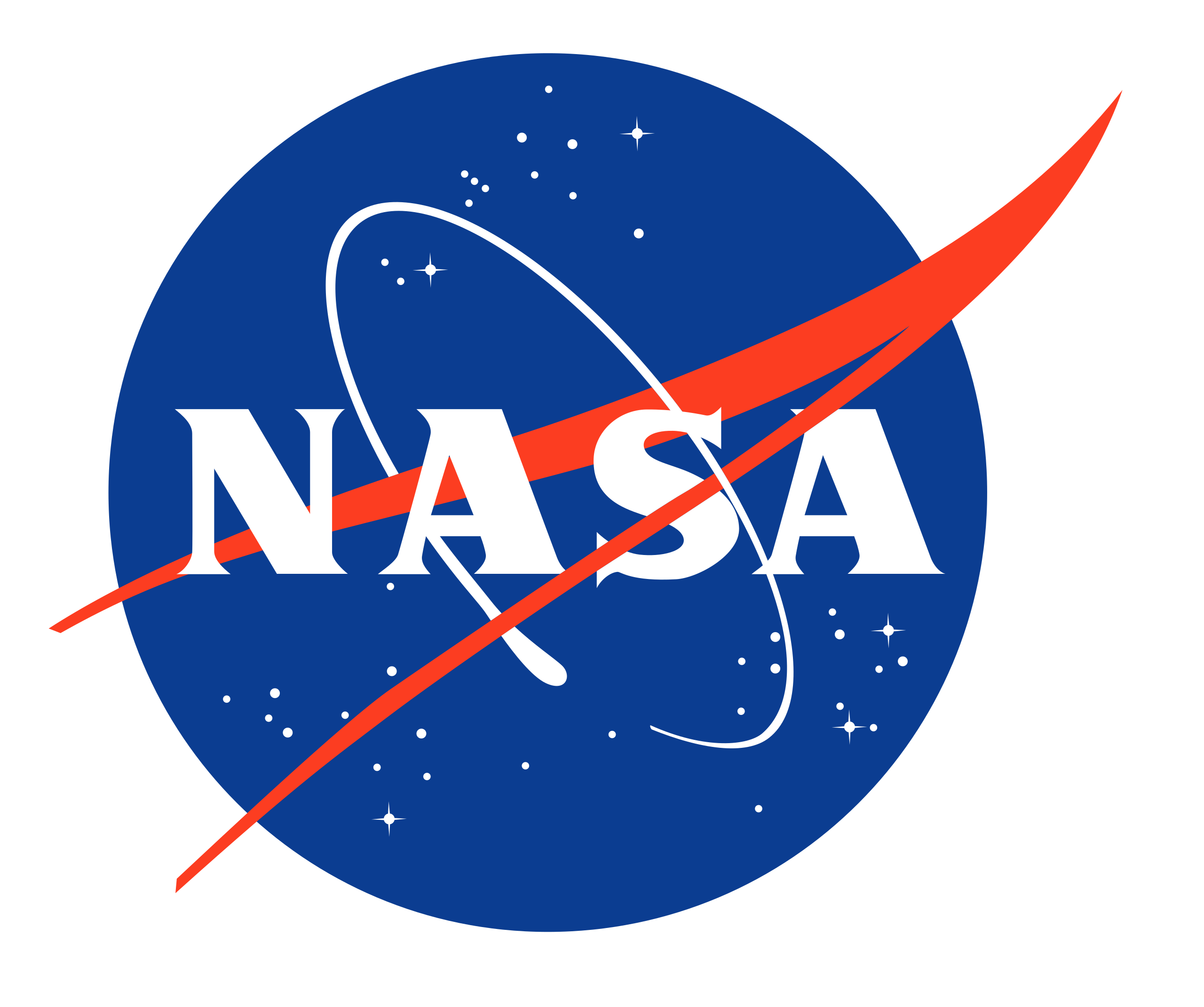In our expanding universe, to look at increasingly distant objects is also like looking back in time to see things as they were billions of years ago. The very expansion of space expands this ancient light, shifting what was once visible to our eyes ever farther into the infrared spectrum. Spitzer was built to give us a way to capture this light from galaxies that formed and grew when the universe was young.
Spitzer has helped to find some of the most distant and ancient galaxies ever detected through their feeble infrared glow. It has also helped us to detect and understand cataclysmic events in distant galaxies connected to the turbulent conditions surrounding the supermassive black holes that lie at their very centers.
Black holes aren't stationary in space; in fact, they can be quite active in their movements. But because they are completely dark and can't be observed directly, they're not easy to study. Scientists have finally figured out the precise timing of a complicated dance between two enormous black holes, revealing hidden details about the physical characteristics of these mysterious cosmic objects.
Astronomers harnessing the combined power of NASA’s Hubble and Spitzer space telescopes have found the faintest object ever seen in the early universe. It existed about 400 million years after the big bang, 13.8 billion years ago.
In just a short amount of time, NASA's Spitzer Space Telescope has bagged thousands of previously unknown dwarf galaxies in a giant cluster of galaxies.
For the first time, NASA scientists have detected light tied to a gravitational-wave event, thanks to two merging neutron stars in the galaxy NGC 4993, located about 130 million light-years from Earth in the constellation Hydra.
An international team of astronomers, led by Yale University and the University of California scientists, pushed back the cosmic frontier of galaxy exploration to a time when the universe was only 5 percent of its present age of 13.8 billion years. The team discovered an exceptionally luminous galaxy more than 13 billion years in the past and determined its exact distance from Earth using the combined data from NASA’s Hubble and Spitzer space telescopes, and the Keck I 10-meter telescope at the W. M. Keck Observatory in Hawaii. These observations confirmed it to be the most distant galaxy currently measured, setting a new record. The galaxy existed so long ago, it appears to be only about 100 million years old.
For the first time, astronomers have directly imaged the formation and expansion of a fast-moving jet of material ejected when the powerful gravity of a supermassive black hole ripped apart a star that wandered too close to the massive monster.
NASA's Spitzer Space Telescope has found the ingredients for life all the way back to a time when the universe was a mere youngster.
Astronomers using NASA's Spitzer Space Telescope have announced one of the most precise measurements yet of the Hubble constant, or the rate at which our universe is stretching apart.
Astronomers have come across what appear to be two of the earliest and most primitive supermassive black holes known. The discovery, based largely on observations from NASA's Spitzer Space Telescope, will provide a better understanding of the roots of our universe, and how the very first black holes, galaxies and stars came to be.
An intensive survey deep into the universe by NASA's Hubble and Spitzer space telescopes has yielded the proverbial needle-in-a-haystack: the farthest galaxy yet seen in an image that has been stretched and amplified by a phenomenon called gravitational lensing.
Two of NASA's Great Observatories, the Spitzer and Hubble Space Telescopes, have teamed up to "weigh" the stars in several distant galaxies. One of these galaxies, among the most distant ever seen, appears to be unusually massive and mature for its place in the young universe.
Astronomers have uncovered a burgeoning galactic metropolis, the most distant known in the early universe. This ancient collection of galaxies presumably grew into a modern galaxy cluster similar to the massive ones seen today.
NASA's Hubble and Spitzer Space Telescopes have joined forces to discover nine of the smallest, faintest, most compact galaxies ever observed in the distant Universe. Blazing with the brilliance of millions of stars, each of the newly discovered galaxies is a hundred to a thousand times smaller than our Milky Way Galaxy.
Astronomers have unmasked hundreds of black holes hiding deep inside dusty galaxies billions of light-years away.
Carnegie Institution of Washington
Balloon-borne Large-Aperture Submillimeter Telescope
Using known distances of 50 galaxies from Earth to refine calculations in Hubble's constant, astronomers estimates the age of the universe at 12.6 billion years.
NASA's Spitzer Space Telescope has revealed that some of the universe's earliest galaxies were brighter than expected. The excess light is a byproduct of the galaxies releasing incredibly high amounts of ionizing radiation. The finding offers clues to the cause of the Epoch of Reionization, a major cosmic event that transformed the universe from being mostly opaque to the brilliant starscape seen today.
A deep look back to the early universe by NASA's Spitzer Space Telescope has revealed a surprisingly rowdy bunch of galaxies. Within a large galaxy sample observed 1.5 billion years after the Big Bang, Spitzer witnessed around 15 percent of galaxies undergoing bouts of extreme starmaking, called starbursts.
Astronomers have detected a huge mass of glowing stardust in a galaxy seen when the universe was only 4 percent of its present age. This galaxy was observed shortly after its formation and is the most distant galaxy in which dust has been detected. This observation is also the most distant detection of oxygen in the universe.
In the ongoing hunt for the universe's earliest galaxies, NASA's Spitzer Space Telescope has wrapped up its observations for the Frontier Fields project. This ambitious project has combined the power of all three of NASA's Great Observatories -- Spitzer, the Hubble Space Telescope and the Chandra X-ray Observatory -- to delve as far back in time and space as current technology can allow.
Using data from NASA's Great Observatories, astronomers have found the best evidence yet for cosmic seeds in the early universe that should grow into supermassive black holes.
By pushing NASA's Hubble Space Telescope to its limits, an international team of astronomers has shattered the cosmic distance record by measuring the farthest galaxy ever seen in the universe. This surprisingly bright, infant galaxy, named GN-z11, is seen as it was 13.4 billion years in the past, just 400 million years after the big bang. GN-z11 is located in the direction of the constellation of Ursa Major
Data from three of NASA's Great Observatories uncover the most massive galaxy cluster ever detected in the early universe.
ESO’s VISTA survey telescope has spied a horde of previously hidden massive galaxies that existed when the Universe was in its infancy. By discovering and studying more of these galaxies than ever before, astronomers have, for the first time, found out exactly when such monster galaxies first appeared.



























